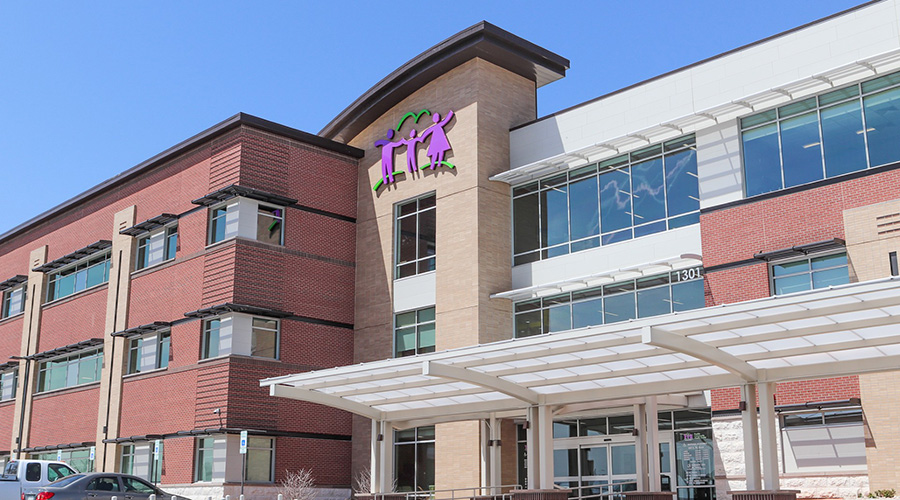Measuring the Real ROI
To gauge the true value of their efforts, facility executives should look beyond cost savings
Management’s expectations of facilities are changing. Facility executives can no longer breathe easy just because the CFO seems satisfied that the latest retrofit project is progressing on time and on budget. Nor can they rest on their laurels because a department head was bowled over by how well a workspace renovation project for his or her people turned out.
Indeed, the measurement of success that facility executives use — or at least should be using — has changed. The switch is due in no small part to the volatile economy. Although facilities may have been viewed as a cost center — capable of being controlled by slashing a line or two on a budget — current financial conditions have pressured the facility function into demonstrating business value across an enterprise. Upper management wants to know how much of a return it is receiving on its facility investment beyond how much money is being saved and whether internal customers are satisfied.
The challenge for facility executives is having an answer at the ready when asked, “What’s the ROI?”
Measuring a true return on investment requires a change of mindset, new metrics and a new measurement approach. Although most facility executives will say ROI can be measured, most also will admit they don’t know how to do it. Many are comfortable having demonstrated a savings on a particular investment, but don’t know how to measure whether an investment produced any return. Worse yet, most aren’t even sure of which metrics measure ROI or how to present those measurements in a credible manner to stakeholders.
The facility department is not immune from the recent effort of companies to rely on analytics when making strategic decisions. (See “An Analytical Approach,” page 46.) When processed correctly, analytics — quantitative and statistical analysis of data — have been credited with allowing companies to compete for market share in an increasingly competitive global economy. In facility management, increasing amounts of data are being collected and more effort is put toward understanding the current state of the operation through visible dashboards. Facility executives often want to further assess the impact of facilities on business operations but don’t know how or don’t have the necessary management support to use sophisticated analytics tools to measure ROI.
For example, interviews conducted with facility executives about what metrics are currently being used to indicate business value include customer satisfaction sheets, time-on-task reports, monitoring of trouble tickets, identifying cost savings through smart procurement, and, in some cases, the visible facility with enlarged dashboards indicating the current state of building operations. Many facility executives are clear that they needed to “market themselves more effectively” because the C-suite sees facility management as a department ripe for budget cuts. They explained they have a “lack of power in the organization to influence change.” Some feel there is “too much emphasis on cost containment initiatives such as Six Sigma and process improvement and not enough on investments to improve productivity.”
SOI vs. ROI
One great misconception in measuring the effect facilities have on business value is that cost savings are considered a return on investment. In reality, cost savings are exactly what the term implies — savings on investment (SOI).
The typical SOI approach defines value to the organization in two basic ways: cuts to the budget and improvement of organizational processes. The highest form of SOI activities include mass economies of scale, hyper-efficiency and business processes that reduce waste and time, such as Six Sigma initiatives. Though a necessary step for maximizing available resources, SOI analysis alone is a process of diminishing returns that seeks to solve short-term goals. Limiting a department to SOI alone may misinterpret business drivers of clients and potentially fails to inspire break-through value for the organization.
The ROI of a project or group of projects, on the other hand, assumes a measurable financial return that is quantified by an analytics process. Measuring business impact requires statistical analysis to isolate the benefit from other possible inputs to the benefit. In contrast to SOI, ROI relies on greater connectivity and communication between interacting departments — a systems view demonstrating alignment with the strategic goals of the organization. The greatest benefit of an ROI analysis is that through careful identification of intervention and control groups, departments can tease out additional information to optimize strategies and deploy projects across the enterprise for even greater return. Long considered too expensive, complicated, or impossible, measuring business benefit is not only possible, but it is fast becoming a business imperative.
Metrics that measure ROI are geared at aligning the goals of any specific facility project with the business goals of an organization, be it a single department or an enterprise.
A process similar to the Balanced Scorecard could help with this effort. Balanced Scorecard is a strategic measurement that helps organizations align their strategic goals and vision with individual objectives. Keys to the success of the system include converting vision into operational objectives, linking the vision to individual performance, strategic planning, and reflecting on the outcomes for ongoing improvement.
The metrics selected by an FM department will likely be related to the productivity of building occupants. The approach to measuring productivity, or any other selected metric, is similar to that of a scientific inquiry. Intervention, also known as experimental, and control groups should be established to measure the isolated impact of a facility project. From there, establish an analysis model, collect data and analyze the results using a statistical analysis tool. Consultants might be necessary to help carry out the inquiry.
Data for this type of analysis are of three types: participants (who is receiving the benefits of the project?), performance metrics (what productivity results are being collected?), and intervention (the project or variables). Each of these data types is required to measure the business impact of facility management initiatives.
Case Study: Changing Lamps Project
A project at a large financial institution provides an example of the process of identifying, measuring and analyzing metrics. Facility executives wanted to know the business value of improving lighting quality for employees by replacing lamps throughout the organization.
For more than 30 years, the organization has been providing high-yield financial and brokerage services to clients worldwide from its primarily New York-based offices. The most requested change by employees through the buildings’ more than 20 years of existence has been related to the fluorescent lighting system. Some employees complain of headaches, dizziness, sleepiness and distraction from the buzzing associated with the existing fluorescent lighting system. An increase in complaints in recent years prompted the facility management team to investigate the real causes of complaints and explore cost-effective options to recommend for budget approval.
Statistical Approach
This study would investigate the cost benefit and ROI of switching to daylight or natural lamps because of the effect daylight has been shown to have on employee moods. The hypothesis is that if the occupants’ symptoms are caused by a low level of sunlight, which leads to lethargic, less productive behavior, then switching to a lighting system that simulates daylight will reduce complaints and improve productivity. If the hypothesis is substantiated, the new system could be rolled out across the enterprise to generate a greater ROI.
For the investigation, four floors of employees at the company will be studied. Floors 10 and 11 will be the intervention group, which will be exposed to daylight lamps, and floors 14 and 15 will be the control group, which will continue to work under standard fluorescent lamps.
Data will be collected for all floors simultaneously over three months and will be compared to similar data from the previous year during the same period. For the design of the value analytics to be valid, the employees on all floors must be of a similar number, type and function. Computing the value of the new lighting must ensure that the group of employees using daylight bulbs do not differ in any important respect from those under the fluorescent lighting.
Data related to the participants, the metrics and lighting system variable would be collected.
Data collected on participants includes employee identification numbers for sales and support staff on all four floors. Employees included in the study must have been working for the company for at least one year and must remain on the same floor during the duration of the study. Other data collected includes employee job titles, length of tenure, and current and previous year salaries.
Selecting Metrics
Metrics to be gathered during the study include results of employee satisfaction surveys — both before and after the investigation — the number of sick leave days for each floor by employee, the number of health care plan claims, monthly sales figures and figures aimed at gauging productivity, such as the number of calls being made. Previous years’ data for all of the metrics included in the study should be gathered, too.
Data gathered regarding the intervention — the variable being studied — includes the installation of daylight lamps on two floors. Investigators would also gather the installation cost of lamps by fixture and by floor, annual maintenance costs by fixture and floor, estimated energy costs for each floor and previous years’ energy costs for each floor during same period.
Once the data is collected, filtered for anomalies, and screened for accuracy, facility executives will analyze the data utilizing a statistical approach for isolating impact. Facility executives will use the analysis to answer the question of whether there is a statistically significant relationship between lighting systems and employee satisfaction, health, attrition, productivity, and financial outcomes of employees. Facility executives will be able to analyze the financial implications of different lighting systems based on installation costs, the total cost of ownership, energy costs, sick leave, attrition, and sales revenue. If daylight lamps prove effective in improving financial outcomes, the next step in the analysis calls for determining the payback period for installing a daylight system, the internal rate of return and the ROI for installing the system companywide.
ROI is calculated by the formula: ROI = benefit/cost - cost * 100. The result is reported as a percentage from which the cost/benefit ratio and payback period are calculated. In this study, the changes in revenue by each group of floors will be used as the “benefit” because it is already reflected in financial terms. Not all metrics can be converted to a financial form. Measuring changes in behavior or perception of a project, for example, cannot be expressed in financial terms. Nonetheless, data can still be analyzed statistically.
The result of this type of study helps to establish a more reliable strategic basis for the purchase of lighting systems. Many hidden benefits and potential losses can be discovered by using this type of methodology. The study’s findings can be presented to upper management as a business case, and the results from the study are more substantiated and believable than a companywide survey seeking employee opinions.
Facility executives who choose the right metrics and the right measurement approach can take new-found control of business drivers for their department, form strategic partnerships with their internal clients, and become a growth facilitator for the organization as a whole.
PRODUCTIVITY
Choosing the Right Metrics
Facility executives should take a step back if they hope to demonstrate their value, to become a strategic partner in long-term decision-making, and to help an organization grow.
Successfully measuring facility performance with analytics is dependent upon the ability of facility executives to adopt a third-person perspective as business-value analysts, allowing them to choose the right metrics.
Consider a government agency that recently requested three bids from companies providing ergonomic workstations. The agency’s criteria included: best price, most mobility, and employee approval — which was measured over six weeks by the same group of employees using the workstations two weeks at a time.
Though the agency may get the best price of a mobile system that employees enjoy, from an analytics perspective these criteria fail to address the true benefit of the purchase: impact on productivity. In this scenario, in addition to the cost savings from choosing the cheapest workstations, the metrics and the design to measure them are subjective.
In an analytics approach, each workstation would be deployed to three employee groups with generally the same function. Instead of collecting employee satisfaction sheets, their productivity levels would be measured and compared — between each group and from the previous month’s performance.
|
An Analytical Approach
Evaluating a project successfully depends on the ability to sort assumptions from the results of statistical analysis.
While interviews and customer satisfaction sheets are useful as reflections of attitudes of occupants or internal clients, these outcomes do not indicate the impact of the project on the organization as a whole. Neither do assessments of knowledge change (testing) and behavior change (skill development).
An analytics approach answers five critical questions:
- What was the return on investment?
- What difference did it make on the organization’s strategic goals?
- What worked best and for whom?
- What is the best deployment strategy for the project being measured?
- What could the potential benefit be for future years or for other regions?
At times, these questions can challenge the status quo of the facility department. And nearly always, answers require facility executives to change their mindset from what can be referred to as an assumption-based assessment to an analytics-based assessment, which more closely matches that of upper management. An analytics-based approach focuses on strategic rather than tactical decisions; long-term strategies rather than short-term ones; and business impact rather than budget analysis.
|
Jonathan M. Estes is a senior analyst with Strategic Measures, Inc., Chapel Hill, N.C. He has worked with companies throughout the United States and internationally to help leaders understand, measure and communicate the value they bring to their organizations.
Related Topics:











